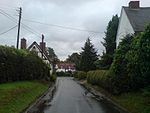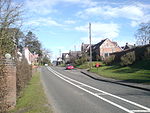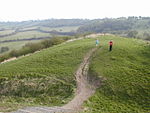Yarningale Aqueduct

Yarningale Aqueduct is one of three aqueducts on a 4 miles (6 km) length of the Stratford-upon-Avon Canal in Warwickshire. It spans the Kingswood Brook near the village of Claverdon. All three aqueducts are unusual in that the towpaths are at the level of the canal bottom. Originally built between 1812 and 1816 as a wooden structure, the aqueduct is a single-berth navigation over a local stream, and is approximately 42 feet (13 m) long. It leads into the 34th lock – "Bucket Lock" – on the canal, the middle of a three-lock flight in the Claverdon area. In 1834, the aqueduct was destroyed by flooding of the two waterways, caused by a surge from the nearby Grand Union Canal. It was rebuilt in cast iron the same year by Horseley Ironworks.
Excerpt from the Wikipedia article Yarningale Aqueduct (License: CC BY-SA 3.0, Authors, Images).Yarningale Aqueduct
Yarningale Lane, Stratford-on-Avon Claverdon CP
Geographical coordinates (GPS) Address Nearby Places Show on map
Geographical coordinates (GPS)
| Latitude | Longitude |
|---|---|
| N 52.2952 ° | E -1.7316 ° |
Address
Yarningale Lane
Yarningale Lane
CV35 8HW Stratford-on-Avon, Claverdon CP
England, United Kingdom
Open on Google Maps









